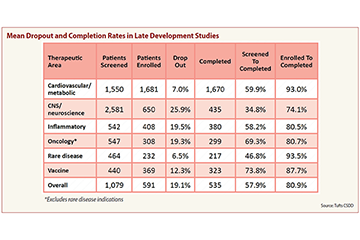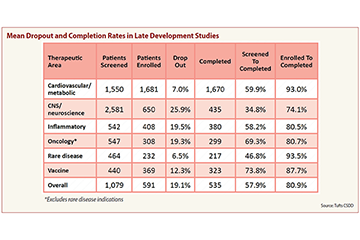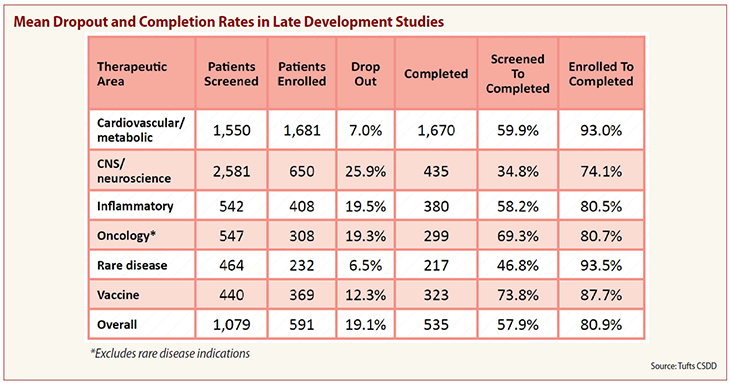
Home » Recruitment Rates Rising, but Retention Rates Fall, According to New Study
Recruitment Rates Rising, but Retention Rates Fall, According to New Study

February 2, 2020

Global trial recruitment rates have been on an upward swing over the past seven years, thanks to new techniques designed to make patient participation easier, but the benefits have not translated to trials’ ability to retain patients.
Patient involvement in protocol development, mobile data collection devices and virtual trials all have contributed to improved recruitment metrics since 2012, says the Tufts Center for the Study of Drug Development (CSDD) in its latest impact report. CSDD collected data on 87 trials from four top-20 pharma companies and one global CRO.
The study found that actual enrollment exceeded planned enrollment in 2019 by 113 percent, compared to 2012 when trials achieved an average of only 96 percent of planned enrollment. And sites are recruiting faster, the report says, with 77 percent of trials hitting or beating planned timelines, compared to only 47 percent in 2012.
“These findings may suggest that organizations have more effective recruitment strategies or could be setting less ambitious targets,” lead study author Mary Jo Lamberti, CSDD associate director of sponsored research, told CenterWatch Weekly.
The study also found that recruitment approaches were fairly traditional. The three most effective strategies cited by respondents were patient outreach through traditional or digital media, chart reviews and trial-matching services.
Trials in North America had the highest planned-to-actual enrollment ratio, and both North American and Asia/Pacific trials achieved an activation rate of more than 85 percent. Of all sites studied, 87 percent of proposed early-stage trials and 85.7 percent of late-stage trials were able to begin recruiting.
Respondents’ average number of sites activated in 2019 was 30.5 in North America, 30.1 in Eastern Europe, 27 in Western Europe and 12.5 in Asia/Pacific.
But despite all the gains in enrollment, patient retention took a serious hit as the trial dropout rate rose to 19.1 percent in late-stage trials globally in 2019 from 15.3 percent in 2012, with the highest rates occurring in central nervous system (CNS) and oncology trials. CNS trial dropout rates grew to 25.9 percent in 2019 from 19.2 percent in 2012, and oncology trial rates grew to 19.3 percent from 18.2 percent. Vaccine trials experienced a 12.3 percent dropout rate in 2019. Cardiovascular and rare disease trials fared best, with rates of 7 percent and 6.5 percent respectively.
To purchase the report, click here: https://bit.ly/36MhA0S.

Upcoming Events
-
14May
-
23May
-
21Oct




